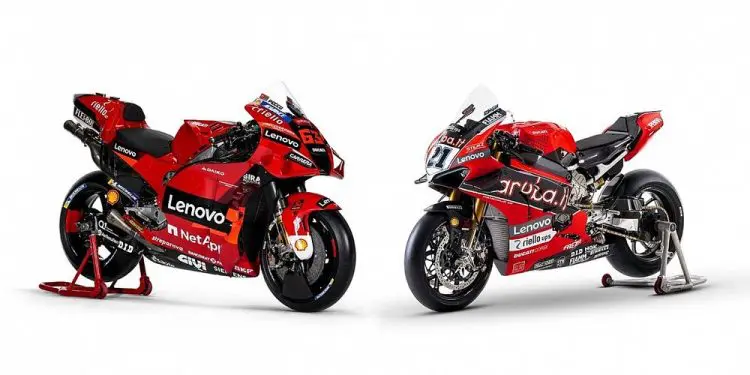In the world of motorsports, the rumble of engines, the scent of burning rubber, and the sheer thrill of speed unite fans across the globe. Among the pantheon of high-octane racing, Formula 1 and MotoGP have long reigned supreme in their respective domains: one, the pinnacle of car racing, and the other, the zenith of motorcycle racing. Yet, whispers and rumors have swirled about a revolutionary change on the horizon, particularly in light of Liberty Media’s acquisition of MotoGP’s organizing body, Dorna Sports. This seismic shift in the motorsport landscape brings to the forefront an intriguing proposition: the merging of Formula 1 and MotoGP into a singular, spectacular event. However, as captivating as this idea may be, it prompts a deeper question – is it the most logical step forward? Or does a more sensible fusion lie in the alignment of MotoGP and the World Superbike Championship (WSBK)?
The Allure of the Ultimate Motorsport Weekend
The notion of combining Formula 1 and MotoGP into a single weekend festival of speed is undeniably appealing. Imagine the world’s fastest cars and motorcycles, sharing the same stage, offering fans a unique spectacle that blends the epitome of engineering, skill, and bravery from both worlds. Such an event could transcend the traditional boundaries of motorsport, drawing in a broader audience and creating a melting pot of fan bases. The commercial prospects are vast, with potential for unprecedented levels of sponsorship, media coverage, and global attention.
However, beyond the allure lies a labyrinth of logistical, safety, and regulatory challenges. The infrastructural demands of hosting both series simultaneously are colossal. Formula 1 circuits are engineered with specific considerations for car racing, from track width to run-off areas and barrier placements. MotoGP circuits, while sometimes overlapping with F1 in venues like Silverstone or Circuit de Barcelona-Catalunya, have their own set of stringent safety standards tailored to the vulnerabilities of motorcycle racing.
Moreover, the inherent risks of motorsport magnify when contemplating such an amalgamation. The differing speeds and dynamics of cars and bikes raise significant safety concerns, not to mention the potential for track wear and tear affecting performance and safety across both formats.
A More Harmonious Union: MotoGP and WSBK
Upon closer examination, the merger of MotoGP and the World Superbike Championship emerges as a more fitting and harmonious proposition. Both series celebrate the pinnacle of motorcycle racing, albeit with distinct flavors – MotoGP, with its prototype machines that represent the forefront of motorcycle technology, and WSBK, showcasing highly modified versions of production motorcycles available to the public. This complementary relationship between the two offers a foundation for a compelling racing weekend that caters to a wider spectrum of motorcycle racing enthusiasts.
The advantages of such a merger extend beyond fan engagement. From a logistical standpoint, aligning MotoGP and WSBK events is a more feasible endeavor. Both series already share common ground in terms of safety standards and track requirements, making the integration of their race weekends a smoother process. Additionally, this union could serve as a catalyst for greater technical cross-pollination between the series, fostering innovation and competitiveness.
From a competitive angle, the juxtaposition of MotoGP and WSBK could also enrich the racing narrative. It would offer riders a stage to showcase their skills across different forms of motorcycle racing, potentially paving the way for cross-series participation and new rivalries. For upcoming talents, it presents a clearer pathway and greater visibility within the world of motorcycle racing.
The Way Forward
As the motorsport world stands at the crossroads of tradition and innovation, the merger of MotoGP and WSBK represents a forward-thinking approach that respects the essence of motorcycle racing while embracing the potential for growth and evolution. This strategic alignment would not only consolidate the fan base but also strengthen the commercial appeal and sustainability of motorcycle racing as a whole.
To realize this vision, stakeholders from both series, along with circuit operators, sponsors, and broadcasters, must embark on a collaborative journey. The key lies in meticulous planning, from scheduling and logistics to marketing and fan engagement strategies. Moreover, a concerted effort is needed to ensure that safety remains paramount, with continuous advancements in track design, protective gear, and emergency response protocols.
In conclusion, while the dream of uniting Formula 1 and MotoGP stirs the imagination, it is the alliance of MotoGP and the World Superbike Championship that holds the key to a more practical and promising future for motorcycle racing. This proposed merger is not merely about sharing a race weekend; it’s about crafting a new legacy for the sport, one that celebrates its diversity, honors its heritage, and accelerates into the future with unwavering passion and ambition. As motorsport enthusiasts, we stand on the brink of a new era, one that promises to elevate the spirit of motorcycle racing to unprecedented heights. Let the engines roar, the tires grip, and the hearts race.






